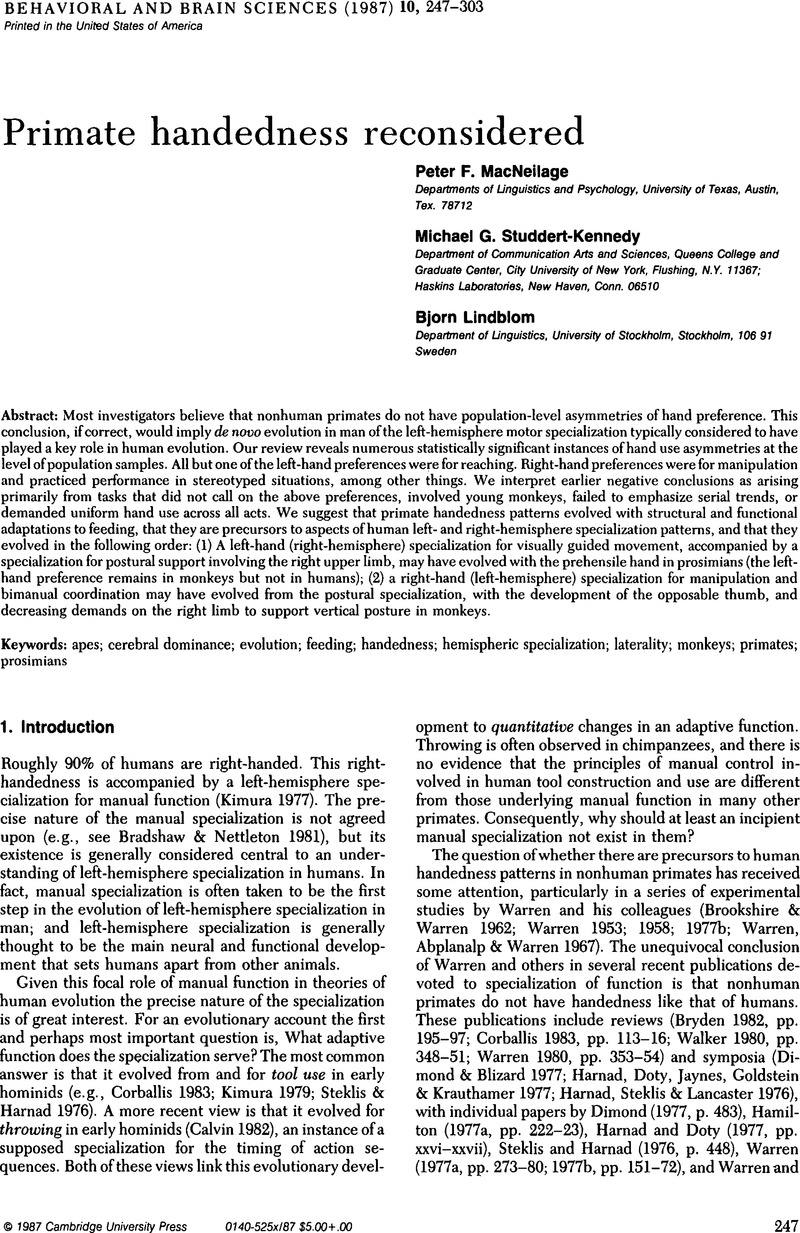Crossref Citations
This article has been cited by the following publications. This list is generated based on data provided by Crossref.
Watson, Neil V.
and
Kimura, Doreen
1989.
Right-hand superiority for throwing but not for intercepting.
Neuropsychologia,
Vol. 27,
Issue. 11-12,
p.
1399.
Camperio Ciani, A.
1989.
Cranial morphology and development: new light on the evolution of language.
Human Evolution,
Vol. 4,
Issue. 1,
p.
9.
Lehman, Ralph A. W.
1993.
Primate Laterality.
p.
149.
MacNeilage, Peter F.
1993.
Primate Laterality.
p.
319.
Marchant, Linda F.
1996.
On the other hand: Gender, space, and power compared.
International Review of Sociology,
Vol. 6,
Issue. 3,
p.
357.
Blois‐Heulin, C.
Guitton, J.S.
Nedellec‐Bienvenue, D.
Ropars, L.
and
Vallet, E.
2006.
Hand preference in unimanual and bimanual tasks and postural effect on manual laterality in captive red‐capped mangabeys (Cercocebus torquatus torquatus).
American Journal of Primatology,
Vol. 68,
Issue. 5,
p.
429.



